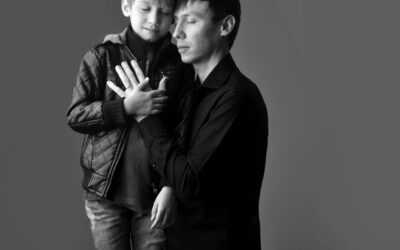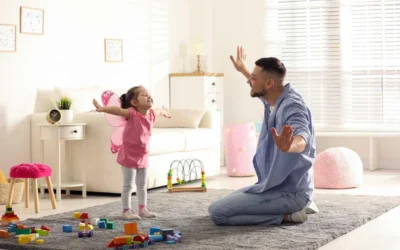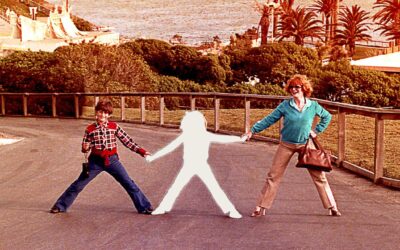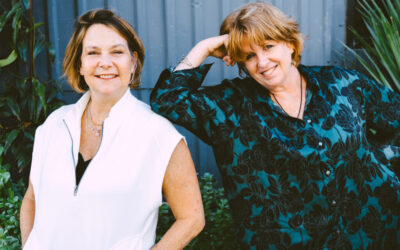Podcast: Play in new window | Download (Duration: 36:06 — 24.9MB)
Subscribe: Apple Podcasts | Spotify | Amazon Music
Disorganized Attachment
Let's talk about the elusive 4th category of adult attachment, disorganized attachment, and how this state of mind relates to everyone, no matter your trauma history.
Dropping into overwhelm and disorganization happens to everyone at times, and some more than others. When we have been exposed to serious danger, unresolved fright or major loss in such a way that it interferes with healthy coping patterns, we are left to our own to manage the world. In research terms they call this disorganized or unresolved, but we’d like to describe it as squirting squid ink to confuse who we think is the predator and making a run for it.
Wrapping up this 3-part series focusing specifically on adult attachment, Ann Kelley PhD and Sue Marriott LCSW, CGP discuss how this style of attachment forms and how it appears in adult life. Start the series here with episode 59 on dismissing attachment, Are You Cool or Just Cut Off and then go to Episode 60 and Anxious Attachment.
Finally, listen here to learn how to organize yourself internally and externally.
Learn how to adjust back into an organized state and conquer your disconnection through focusing on yourself and building and deepening relationships. We’ll talk about how pockets of disorganization and trauma permeate in life and how increasing your bucket can improve your ability to move across the attachment spectrum and establish coherence.
0:00-10:00
Recap on attachment types and the Spectrum of Attachment (this is 3 of 3, with Episode 59 and 60 the first 2)
Overview of disorganized attachment ie. driving without a GPS,
“fear without solution” unintegrated mental states – Lyons-Ruth
Disorganized attachment in childhood certainly happens more often with children who are intentionally mistreated and abused, but also can occur without specific abuse.
Chronic fright and/or having a frightning caregiver are both factors, as well as significant loss.
Children whose parents had significant unprocessed loss or trauma that may have their own disorganization struggles can also unintentionally create a frightening environment that sets their children on developmental pathways to have an incoherent and unorganized coping styles.
10:00-20:00
Establishing coherence to make sense of the bad things that have occurred in life
It’s not what happened to you but what sense you’ve made of it
Pockets of disorganization as a human condition
Pockets of trauma, normalcy of these pockets
The need to slow down when encountering these pockets, even saying to yourself that you’re disorganized is organizing.
It’s not me it’s my amygala!
20:00-30:00
Big step of just moving from disorganized to organized, and eventually if you can get there from insecure to earned secure. But we will take moving from having lost one’s thinking to gaining it back. Grounding from floating. Stopping the spin.
Disassociation
Strengthening and deepening moments of having secure states of mind can eventually move your bucket, or internal working model, towards earned secure!
Practical ideas – use small risks of vulnerability in close relationships, mindfulness, journaling, practicing Grices maxims (increasing coherence) and anchoring scales to ground.
The more safe you feel, the more steady secure and organized you can get
When someone is in a disorganized state, it’s time to get them grounded and more securely inside themselves, not solve relational problems or give a lot of cognitive feedback. This is important both for couples and group therapy especially.
30:00-40:00
Importance of working on attachment first, then the trauma
If you’ve had trauma, best thing to do is build and grow safe relationships
You may never have to unearth all the specific trauma if you focus on your attachment and relationships, and if you do you’ll have much steadier ground to work from.
Securing safe relationships IS working on trauma!
Work on coherence – balanced communication where you can hold yourself and your listener at same time. Notice if you lose people while talking or if you know you “aren’t a talker” and have trouble seeing why that might be important to secure relationships.
Lot’s of hope! xoxo
________________
Want more like this?
Check out our free YouTube video Modern Adult Attachment 101 to learn more – https://www.youtube.com/watch?v=PF7g4K8fDvo
Episode 59 – Dismissing Attachment Are You Cool or Cut Off? (soft part 1 of 3)
Episode 60 – Preoccupation in Relationships – Grow Your Security By Learning About the Signs of Anxious Attachment (soft part 2 of 3)
Become a TU Supporter and get more in-depth content (please):
Many of you have expressed a desire to get more in-depth content and we believe we have a found the answer! Become a Patreon member and, depending on level, you can have access to a private feed with deeper content and more access to us, as well as support our ability to continue to provide fresh content to many across the globe that may not otherwise have such free access. Go to Patreon.com/therapistuncensored and sign up today. We would be so grateful for the support!
_____
Resources for this episode:
From Infant Disorganization to Adult Dissociation 2016 article by Lyons-Ruth et al.
Attached The New Science of Adult Attachment by Amir Levine
A Secure Base by John Bowlby, The father of attachment! Mary Main, Mary Ainsworth both primary researchers with Bowlby.
Mary Main and the Adult Attachment Interview Good summary, check it out!!
Assessing Adult Attachment A Dynamic-Maturational Approach to Discourse Analysis (2011) Patricia Crittendon and Andrea Landini, Book that updates the previous attachment literature specific to clinical populations.
Attachment Disturbances in Adults Treatment for Comprehenisve Repair (2016) Brown and Elliott – New book that is a MUST HAVE for clinicians interested in attachment.
Clinical Application of the Adult Attachment Interview Steele and Steele – Excellent edited book on using the AAI in various clinical settings – we use it to learn what is important clinically that the AAI is getting at re: best practices for treating adult attachment.













